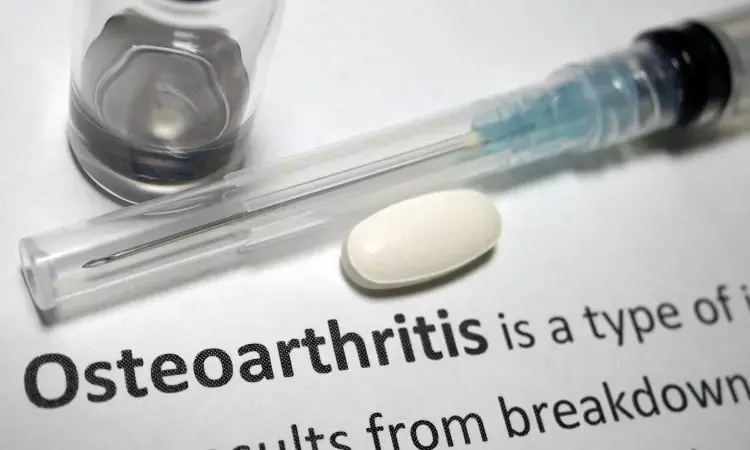- Home
- Medical news & Guidelines
- Anesthesiology
- Cardiology and CTVS
- Critical Care
- Dentistry
- Dermatology
- Diabetes and Endocrinology
- ENT
- Gastroenterology
- Medicine
- Nephrology
- Neurology
- Obstretics-Gynaecology
- Oncology
- Ophthalmology
- Orthopaedics
- Pediatrics-Neonatology
- Psychiatry
- Pulmonology
- Radiology
- Surgery
- Urology
- Laboratory Medicine
- Diet
- Nursing
- Paramedical
- Physiotherapy
- Health news
- Fact Check
- Bone Health Fact Check
- Brain Health Fact Check
- Cancer Related Fact Check
- Child Care Fact Check
- Dental and oral health fact check
- Diabetes and metabolic health fact check
- Diet and Nutrition Fact Check
- Eye and ENT Care Fact Check
- Fitness fact check
- Gut health fact check
- Heart health fact check
- Kidney health fact check
- Medical education fact check
- Men's health fact check
- Respiratory fact check
- Skin and hair care fact check
- Vaccine and Immunization fact check
- Women's health fact check
- AYUSH
- State News
- Andaman and Nicobar Islands
- Andhra Pradesh
- Arunachal Pradesh
- Assam
- Bihar
- Chandigarh
- Chattisgarh
- Dadra and Nagar Haveli
- Daman and Diu
- Delhi
- Goa
- Gujarat
- Haryana
- Himachal Pradesh
- Jammu & Kashmir
- Jharkhand
- Karnataka
- Kerala
- Ladakh
- Lakshadweep
- Madhya Pradesh
- Maharashtra
- Manipur
- Meghalaya
- Mizoram
- Nagaland
- Odisha
- Puducherry
- Punjab
- Rajasthan
- Sikkim
- Tamil Nadu
- Telangana
- Tripura
- Uttar Pradesh
- Uttrakhand
- West Bengal
- Medical Education
- Industry
Joint injections ineffective for hand osteoarthritis symptoms, finds evidence review

Joint injections to relieve the symptoms of hand osteoarthritis are no better than placebo, while the effectiveness of topical creams and gels is uncertain, finds a pooled data analysis of the available evidence, published in the open access journal RMD Open.
But painkiller tablets and steroid pills do work, with the latter the most effective, the evidence suggests.
The findings prompt the researchers to call for a review of the evidence supporting current recommendations on joint injections for hand osteoarthritis, which affects around 1 in 6 women and 1 in 12 men over the age of 40.
Osteoarthritis results from the wearing away of the protective cartilage on the ends of bones, causing pain, swelling, and impaired joint mobility. While any joint can be affected, it’s most common in the knees, hips, and hands.
Various forms of medical treatment are available, but the evidence to date for some of them has been contradictory, while new evidence has emerged for others.
In a bid to provide some clarity, the researchers trawled research databases for relevant comparative clinical trials published up to the end of 2021.They found 72 trials, involving a total of 7609 participants and 29 pharmacological interventions provided over an average period of 3 months.
Sixty (5246 participants) of these trials looked specifically at pain and were included in a pooled data analysis.
The results of this showed that non-steroidal anti-inflammatories (NSAIDs) and steroid tablets were better than placebo, with steroid tablets edging ahead of standard painkillers.
The effectiveness of topical creams and gels wasn’t clear, the analysis indicated, but joint injections of hyaluronate (a type of therapeutic lubricant) or steroids, and hydroxychloroquine tablets (a drug used to treat arthritis) were no better than placebo, it showed.
NSAID and steroid tablets performed well in reducing pain, improving physical function, and in patient feedback. But while the analysis points to the safety of both steroid and NSAID tablets, the researchers caution that they only assessed treatment withdrawals due to side effects and not long term safety.
Most of the trial participants were women (85) with an average age of 62. And most were of White ethnicity, so potentially limiting the generalisability of the findings, acknowledge the researchers. And the quality of the included studies varied, with two thirds (48) at high risk of bias-in other words, containing systematic errors that might favour one outcome over another.
While the findings on joint injections echo those of previous pooled data analyses, they contradict the recommendations of existing clinical guidelines, highlight the researchers.
“These findings raise questions about the evidence supporting the current treatment recommendation for intra-articular therapies and emphasise the need for future large scale trials with rigorous methodology to establish the efficacy of promising interventions such as topical NSAIDs,” they suggest.
They conclude: “Many pharmacological treatments for hand [osteoarthritis] OA pain are available, of which most have no proven efficacy. For hand OA, oral NSAIDs and oral glucocorticoids appear effective, whereas the efficacy of topical NSAIDs remains questionable. Current intra-articular therapies are ineffective for thumb OA.”
Reference:
Døssing A, Nielsen SM, Kroon FP, et alComparative effectiveness of pharmacological interventions for hand osteoarthritis: a systematic review and network meta-analysis of randomised trialsRMD Open 2023;9:e003030. doi: 10.1136/rmdopen-2023-003030.
Dr Kamal Kant Kohli-MBBS, DTCD- a chest specialist with more than 30 years of practice and a flair for writing clinical articles, Dr Kamal Kant Kohli joined Medical Dialogues as a Chief Editor of Medical News. Besides writing articles, as an editor, he proofreads and verifies all the medical content published on Medical Dialogues including those coming from journals, studies,medical conferences,guidelines etc. Email: drkohli@medicaldialogues.in. Contact no. 011-43720751


